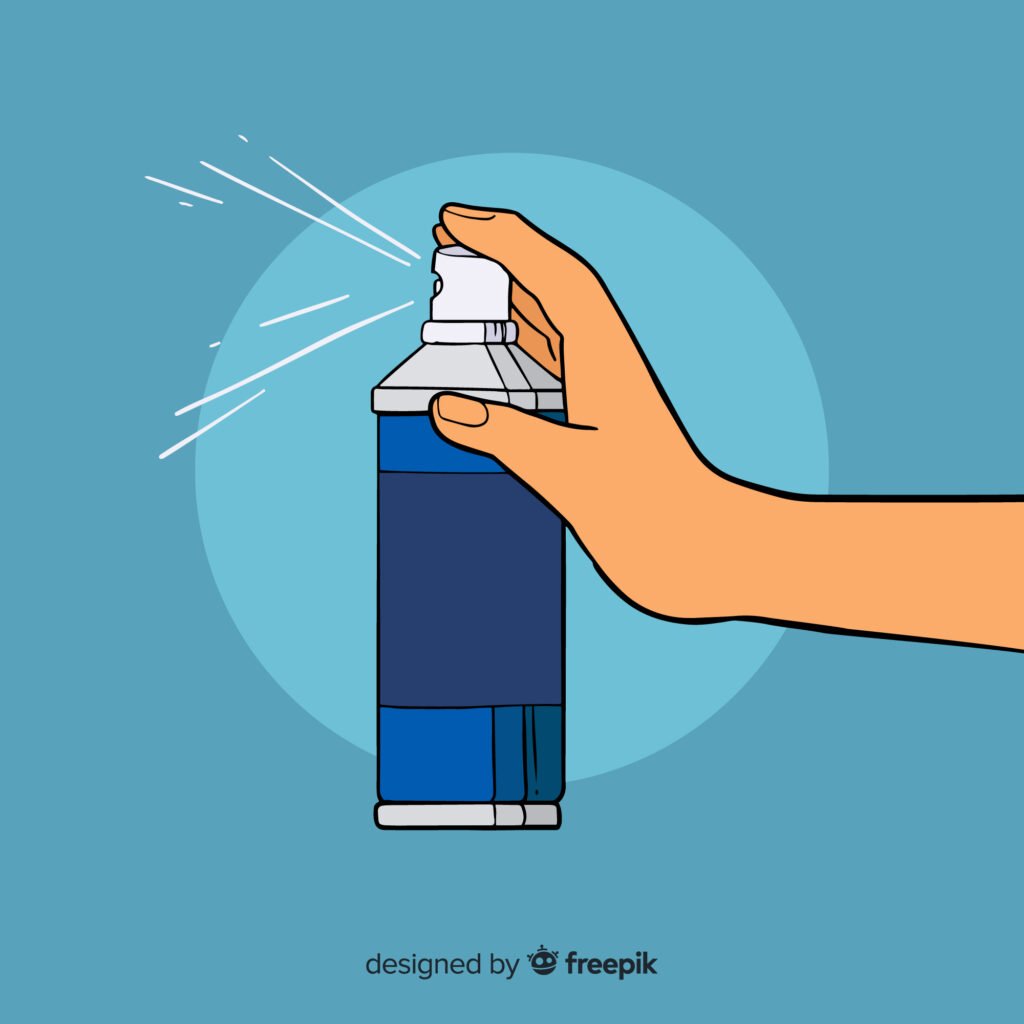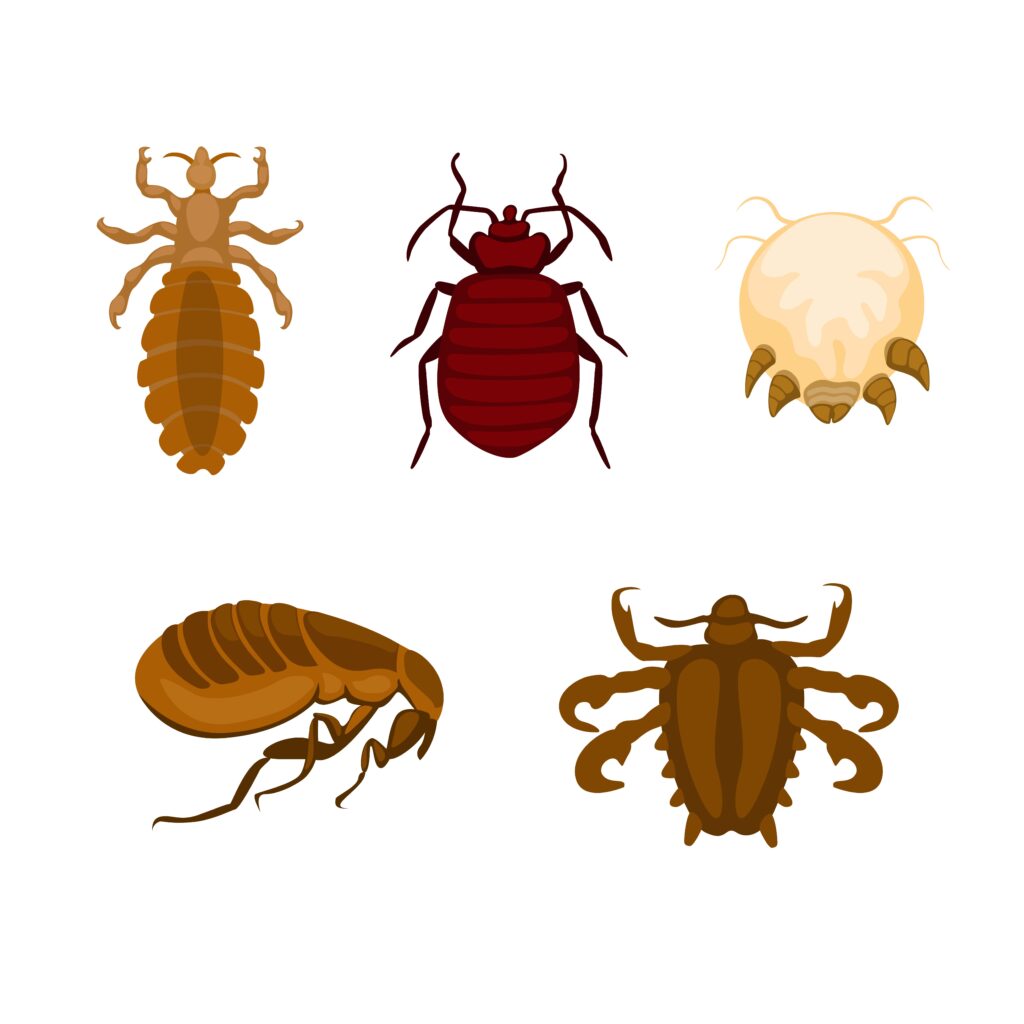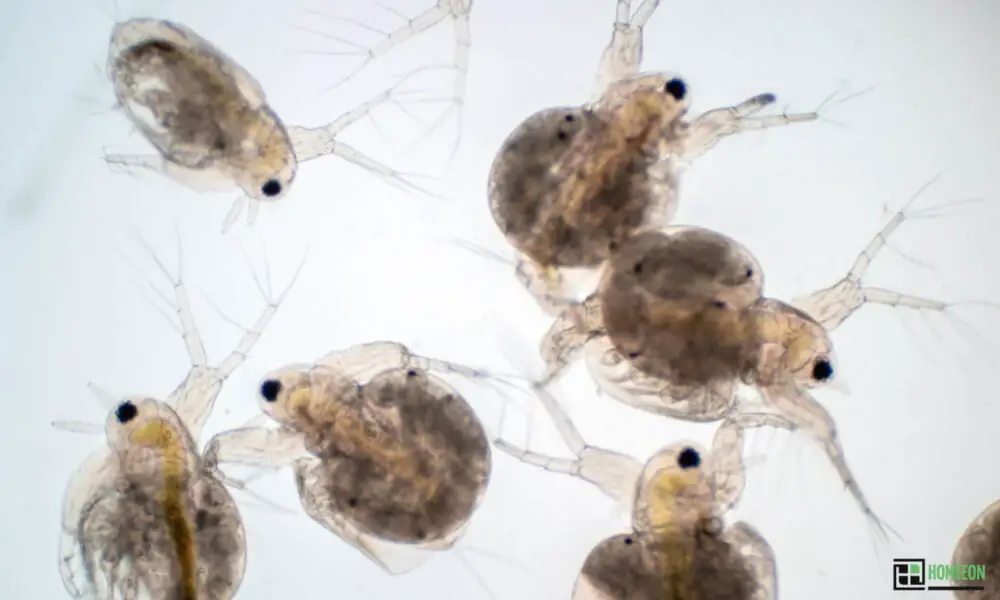Last Updated on July 16, 2023 By Emma W. Thomas
Flea eggs on furniture are small, oval-shaped, and usually, white or off-white in color, resembling tiny grains of salt or sand. To eliminate fleas, start by vacuuming all affected areas, including furniture, carpets, and rugs, to remove eggs, larvae, and adult fleas. Launder bedding, linens, and pet bedding on high heat. Use flea control products designed for furniture and upholstery, such as sprays, powders, or foggers. Treat pets with veterinarian-recommended flea control products.
What Do Flea Eggs Look Like On Furniture?
Flea eggs are one of the crucial stages in the life cycle of fleas. These minuscule, oval-shaped eggs are typically white or off-white and measure about 0.5mm in length. Due to their tiny size, flea eggs can be challenging to spot on furniture. However, they are often found in areas where pets spend a lot of time, such as on bedding, carpets, upholstery, and other furniture fabrics.
When deposited by adult fleas, these eggs are not sticky and tend to fall off easily onto various surfaces. This dispersion ensures that there is a higher chance of survival for the flea larvae once they hatch. Flea eggs can be identified by their resemblance to grains of salt or tiny white specks. They have a smooth surface and are typically found clumped together in small clusters or scattered in individual eggs.
It is important to note that flea eggs are not readily visible to the naked eye, and their detection requires close examination. The best way to identify flea eggs on furniture is to use a magnifying glass or a flashlight to inspect the surface. Additionally, you may notice flea dirt, which consists of flea feces that resemble small black specks, near areas where eggs are present.
Where Do Fleas Lay Their Eggs?
Fleas love preying on pets such as cats and dogs. They suck the animal’s blood and lay the eggs on their skin. These eggs stick on the animal’s fur for a while before they dry up and lose the ability to stick to the skin. They will then drop on the furniture, carpets, pet bedding, and other places where they will hatch into fleas if the environment is conducive.
How Can You Eliminate Flea Eggs From Your Home?
Flea eggs may stay for long in your home unless proper elimination methods are put in place. Some of the ways to get rid of flea eggs include:
Treating Your Pets With Anti-flea Products
Since your pets act as suitable hosts for fleas, it can only be wise to start by treating them to remove any eggs on their skin. You can apply anti-flea shampoo on the pet’s fur and then comb it to remove as many fleas and eggs as possible.
Cleaning Your House Thoroughly.
A flea can live and lay its eggs in any place in your home. It will help to clean every part of the home, including all the corners, and carpets, on top and below the furniture. You also need to clean all the rooms in the house and be sure to tidy up the windows and doors. Doing this helps eliminate any adult fleas and their eggs from their hiding places.
Vacuuming The Surfaces
After cleaning all the areas in your house, be sure to use a vacuum cleaner on all surfaces. Make sure to pay attention to baseboards, corners, wooden floor gaps, behind the furniture, and any other hard-to-reach areas.
Spraying The Surfaces With A Suitable Insecticide
You can also use a suitable insecticide to spray all the likely hiding places for fleas to kill them and their eggs. Make sure to follow the safety measures and the directions on the label when applying the anti-flea products. You may also go for organic substances like diatomaceous earth and use it indoors since it is safe. When used in low-humidity places, this substance dehydrates the fleas and kills them upon coming into contact with them.
Application Of Igr Insect Sprays
IGR (Insect Growth Regulator) spray will kill adult fleas and their eggs. When these creatures contact this spray, they become infertile, and their eggs cannot hatch. Doing this prevents the infestation of different types of pests, including fleas.

Using Essential Oils
Using oil-based sprays such as peppermint, citrus, and cloves can also kill and repel fleas. You can use this method as a follow-up measure after cleaning and treating your place with the right products.
Vinegar
While vinegar may not be effective in killing flea eggs, it can keep adult fleas at bay. These creatures despise the smell and taste of vinegar, and its solution in water can be used to repel them.
Salt
Some people recommend that, if you sprinkle salt in areas suspected to have flea eggs it can help eliminate them. However, it may be tricky and ineffective to use salt as it may require using large amounts. Using large amounts of salt may be dangerous to your pets as it will be toxic for them to inhale.
How Long Does It Take For Flea Eggs To Hatch?
The time taken by flea eggs to hatch depends on environmental factors such as humidity and temperature. But, on average, it can take between 1 and 10 days. When the flea eggs hatch, they produce larvae which are free to move and feed on their host’s blood and flea dirt for development.
After the larvae have fed on the flea dirt for 5 to 20 days, it spins a cocoon and then gets into the pupa stage. This cocoon helps to protect the pupa from repellants/insecticides and other environmental conditions for many days or weeks. The adult fleas then emerge from the pupa whenever a host is present. They sense this presence if there is a movement or body heat that indicates something to feed on.
After a few hours of emerging from their cocoon, the adult fleas start feeding on their host. They then start mating and laying eggs shortly after.
What Can You Use To Kill Flea Eggs Instantly?
Killing flea eggs is not a walk in the park. These items are pretty tiny, and not easy to spot. But, you can wash your beddings and linen with boiling water (above 140 degrees) to kill any flea eggs hiding here. You can also steam clean your carpets and mats after vacuuming them to eradicate any remaining flea eggs.
Which Are The Common Types Of Fleas In The United States?
While there are many flea species globally, only a few of them can affect human health. The table below shows some common types of fleas;
Type of flea | Scientific name | Where found | What it transmits |
Cat flea | Ctenocephalides felis | Commonly found in pets and other domestic animals. | Fleaborne typhus and cat-scratch disease. It can also spread plague bacteria. |
Dog flea | Ctenocephalides canis | Not common in dogs | Spreads Dipylidium caninum (tapeworm in cats and dogs). Also found in humans. |
Ground squirrel flea | Oropsylla Montana | Found in ground squirrels such as rock and California squirrel | Transmits plague bacteria to people |
Oriental rat flea | Xenopsylla cheopis | It is commonly associated with rats. | Transmits fleaborne (murine) typhus and plague bacteria |
Which Are The Common Diseases Spread By Fleas In The Us?
Using proper methods to kill fleas and their eggs is crucial as it helps prevent the transmission of diseases in humans. The most common fleaborne diseases include;
Fleaborne (murine) Typhus
This disease is commonly passed to humans by infected cat fleas (Ctenocephalides felis) or infected oriental rat fleas (Xenosphyll cheopis). It can also be transmitted to people through the flea’s feces (referred to as flea dirt). In the United States, this disease is common in Texas, California, and Hawaii.
Plague
In the United States, plague is mainly transmitted to humans by Oropsylla (infected ground squirrel flea). It is also transmitted globally by Xenopsylla cheopis (infected oriental rat fleas). A person who handles an animal infected with plague bacteria improperly is also at risk of contracting the disease.
Plague bacteria are prevalent in rural parts of the Western US.
Fleaborne Parasites
An animal or person who accidentally swallows an infected flea can get fleaborne parasites such as tapeworms. Since little children may spend a lot of their time near carpeted areas and the floor, they are at a higher risk of contracting the parasites than adults. It is not easy to tell if a person is infected since there are no visible symptoms.
CSD (Cat Scratch Disease)
CSD is most common in places where fleas and cats are found. It may be transmitted to people after a scratch from a cat infected by Ctenocephalides felis flea. It is also likely to get infected from flea dirt or poop due to a cat scratch.
What Are Some Natural Remedies For Preventing A Flea Infestation?
It is easier to prevent a flea infestation than to get rid of one. You can easily do this by using natural scents around crevices and cracks in your home, inside baseboards, and outside the perimeter wall. You can also apply the products to carpets and flooring, but be sure to follow the manufacturer’s instructions. These scents include;

Rosemary Oil
Rosemary oil has a strong smell that repels fleas and other pests from a target or area. While this product can overpower the flea’s senses, its smell is pleasant to humans and pets.
Lemongrass Oil
Lemongrass oil also effectively repels fleas and other biting insects like ticks. It is also pleasant smelling, thus suitable for use around your home.
Vinegar
This natural product has a powerful smell that fleas and other pests dislike. You can dilute a tiny amount of white vinegar and spray it around your home using a spray bottle for the best results. Although vinegar cannot kill fleas, its consistent smell can help keep the insects at bay.
Mint
Planting mint around your perimeter wall may not only be refreshing to you but also an excellent remedy for keeping fleas and other insects away. You can plant them in pots and place them near any openings in your home. You can also spray your home often with mint spray, which will also help.
Are Flea Eggs Harmful To Humans?
Flea eggs themselves are not harmful to humans. They are tiny and often go unnoticed as they are about the size of a grain of sand. However, the presence of flea eggs is a sign that there is an infestation nearby. Fleas are known to carry diseases such as typhus, tularemia, and tapeworm infections, which can be transmitted to humans through bites.
It is the adult fleas that emerge from the eggs and bite humans to feed on their blood. If left untreated, a flea infestation can cause discomfort, itching, and in severe cases, allergic reactions. Therefore, while the eggs themselves pose no direct harm, their presence should be taken seriously as it indicates the potential for human health risks.
Wrapping Up
Flea eggs may be difficult to eliminate from your home since you can barely see them. It is also challenging to see them on your furniture because they are microscopic and hard to see unless under a microscope. You may also confuse these things with flea dirt due to their small size.
But, you could prevent fleas from your home by keeping your pets, bedding, furniture, and upholstery clean at all times.
References:
https://www.fantasticpestcontrol.co.uk/fleas/flea-eggs/
Emma is a graduate of Domestic Science or Family and Consumer Sciences (Home Economics) from the University of Wisconsin. She has 7 years of experience Working with the strategic section of BestBuy and now writing full-time for Homeeon.
From Managing the Home, Interiors, Cleaning, and Exteriors to Gardening and everything about Making A Home Liveable – is her passion and this Homeeon is the result of this.
Emma loves decorating her home with the best stuff found online. She cares about quality over anything and writes reviews about them here in Homeeon. Get in touch with her over Pinterest.
Keep reading her blogs.

